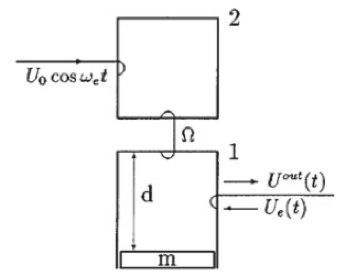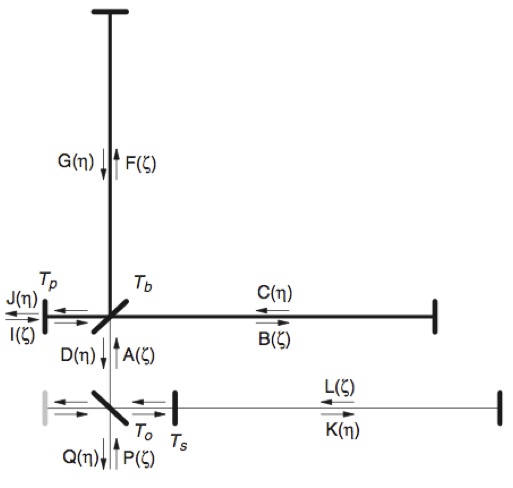Background and History
John von Neumann
Already in the 1930s John von Neumann realised that, while the accuracy of some measurements is limited by the Heisenberg Uncertainty principle, there are certain observables, which are not effected by the Heisenberg Uncertainity Principle and can therefore be measured to much higher accuracy. So, the key point in a measurement process is to choose the best observable.
Invention of the Speed-Meter

The speed-meter for gravitational wave detection was invented by Vladimir Braginsky and Farid Khalili in 1990. They realised that momentum is a conserved quantity and that measuring speed (which is in principle proportional to momentum) instead of position would allow to surpass the Heisenberg Uncertainity limit.
The original speed-meter reference is V. B. Braginsky, F. Ya. Khalili, Physics Letters A 147, 251 (1990).
The picture on the right is an illustration of the speed-meter concept for the readout of a resonant bar detector.
First Suggestion for the Implementation of a Speed-meter in Laser Interferometers

In 2000 V.B.Braginsky, M.L.Gorodetsky, F.Ya.Khalili and K.S.Thorne (Phys. Rev. D 61, 044002, 2000) suggested the first application of the speed meter concept to a Michelson interferometer.
Shortly after that, the idea of an speed-meter based interferometric gravitational wave detector was further developed by P.Purdue and Y.Chen (Phys. Rev. D 66, 122004, 2002) using the apporach of a sloshing cavity at the output port of an Michelson interferometer.
Sagnac Interferometer as Speed-Meter
Then in 2003 Yanbei Chen realised that a Sagnac interferometer per definition measures the velocity of the test masses, because it sense each mirror twice at slightly different times. His article "Sagnac interferometer as a speed-meter-type, quantum-nondemolition gravitational-wave detector" (Phys. Rev. D 67, 122004, 2003) laid the foundation for our speed-meter project!
For more information, please contact Stefan Hild.
